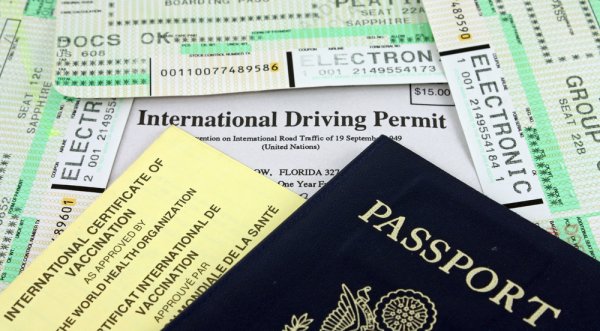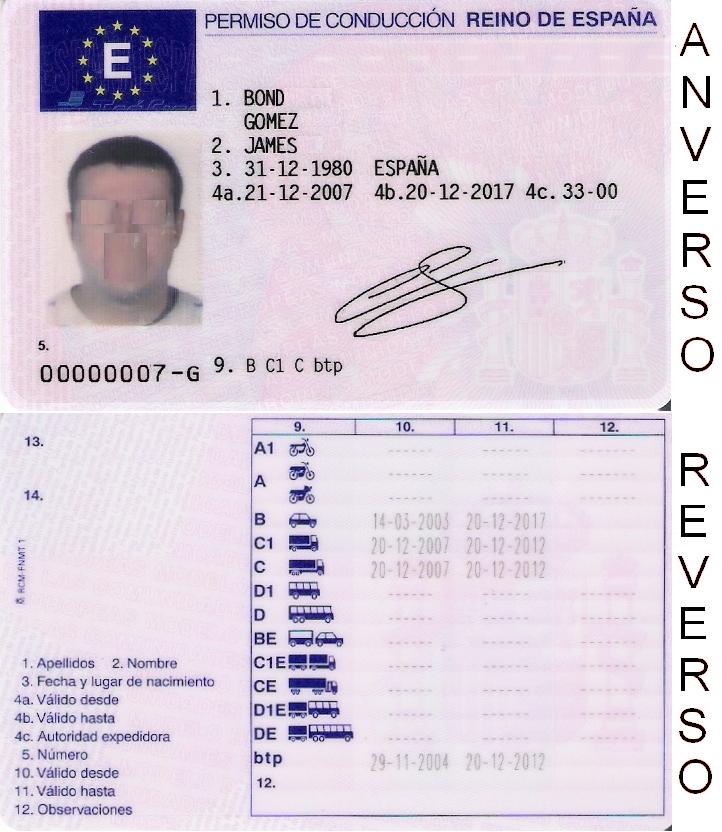Driving and Autos: Driving and Driver's License
People in Spain drive on the right-hand side of the road.
Requirements for Locals
In Spain, a driver’s license is called a licencia de conducción. They are issued by the local Jefatura de Tráfico, or traffic headquarters. For a list of the Jefatura de Tráfico locations and contact information, visit the website for the Ministry of the Interior: www.dgt.es/portal/es/oficina_virtual/conductores
There are different types of licenses and requirements for different types of vehicles—including mopeds, motorbikes with various engine sizes, transport, tractor, and truck licenses.
Written and Road Test
Locals in Spain must earn their driver’s license by passing both a written and practical exam. You must pass the written exam before you attempt the road test; study for this test is essential as the test is very difficult. You must answer 30 exam questions within 30 minutes, and you can get a maximum of three answers wrong. You can take practice tests at www.todotest.com.
Once you have passed the written exam, you will be able to take the practical test (or teórico). You will take the test in the same instructional car you’ll have learned in at your driving school (or autoescuela).
It is not mandatory to enter a driving school in order to take your license exams. It is advisable, however, despite the added cost. The driving school will handle all of the paperwork and scheduling for you, which will make applying for the exams much easier. But it will also give you invaluable information on how to pass the test—essential even if you are already an experienced driver.
For instance, the driving exam does not simply test your knowledge of the general rules of the road in Spain. It also tests your knowledge of the roads and quirks in the city where you’re taking the exam—you will be expected to anticipate left-turn-only lanes, one-way streets, and other hazards to some extent during the test. Entering a driving school is the only way to gain experience in this area while you don’t have a license to drive on your own.
Residence
You must be a resident of Spain to earn a driver’s license in the country.
Age
The minimun legal driving age in Spain is 18. There is also a maximum age of 65, but this applies only to earning your first license; older drivers can still exchange a valid foreign license for a Spanish one if their country has a reciprocity agreement with Spain.
Identification
Documents you’ll need to bring to the practical exam may change depending on your location; your driving school can provide you with information more relevant to your area. Common requirements include:
- A certificate of mental and physical fitness from the Authorised Drivers Check Center (Centro de Reconocimiento de Conductores Autorizado) with a passport photo
- Two passport-sized photos
- A proof of address in Spain, or empadronamiento, issued by your local Town Hall and no more than three months old
- A signed self-declaration that there is no license suspension or pending legal process that forbids you the right to drive
- A signed self-declaration that you do not already hold a second license in the same category
Fee
Earning your license in Spain can be costly. In addition to paying for driving school, you will also pay to take both tests, get a medical exam, and buy manuals. Overall, your costs could add up to several hundred euros.
Other Requirements
You will also be required to take a psicotécnico, or a medical exam that tests your vision, reaction time, and general health. There are many doctors in Spain who specialize in providing these tests for prospective drivers.
Requirements for Foreigners
Driving Using a Foreign License
You can drive using a foreign driver’s license in Spain for up to six months after you have received your residency card. In addition to your driver’s license from your home country, you must carry an International Driving Permit or an official translation of your driver’s license in Spanish.
Obtaining a Local License
After six months of residency, you are required to get a Spanish driver’s license.
If your country does not have a reciprocal agreement with Spain, you will need to follow the same procedure as Spanish nationals applying for a new license—including enrolling in driving school and taking both the written and practical tests. The exams are usually given only in Spanish, but you are permitted to bring a translator if required, and your driving school may be able to arrange an English test for you. Driving schools should have study materials in multiple languages and may offer classes in English and other languages in some areas; whether this service is available depends on your location and the driving schools available, so shop around.
In addition to the identification requirements for the practical exam listed above, foreigners need to supply an original and a photocopy of their Tarjeta de Residencia (Residency Card), or a copy of their passport along with their Número de Identidad de Extranjero (Foreigner Identity Number, or NIE). These items are issued by the local Oficina de Extranjeros (Foreign Office). While requirements for form submittal to the Foreign Office vary from region to region, most require the following:
- A copy of your passport
- Proof of health insurance
- A copy of a recent bank statement
- A copy of an employment contract or proof of enrollment in a university
If your country does have a reciprocal agreement with Spain, you can simply exchange your foreign driver’s license for a Spanish one at the Provincial Traffic Headquarters (Jefatura Provincial de Tráfico). Countries that have a reciprocal agreement with Spain include:
- Andorra
- Algeria
- Argentina
- Brazil
- Bolivia
- Chile
- Colombia
- Dominican Republic
- Ecuador
- El Salvador
- Guatemala
- Japan
- Macedonia
- Morocco
- Peru
- Philippines
- Paraguay
- Serbia
- South Korea
- Switzerland
- Turkey
- Tunisia
- Ukraine
- Uruguay
- Venezuela
If you are from any of the countries on this list, you will need to supply the following to exchange your foreign license for a Spanish license:
- An application form from the traffic headquarters
- Your passport or a valid national identity card
- A residence permit and a valid Tarjeta de Residencia (Residency Card)
- A document certifying you are medically fit to drive, from a recognized medical facility
- Your original foreign driver’s license (which must still be valid), plus a copy
- A written self-declaration that you have no suspensions or bans that would prevent you from driving
- A written self-declaration that you do not already have a license of the same class from another European Union (EU) country
- Two recent passport photos
- A Certificate of Registration from the Central Register of Foreigners for EU foreigners
If you hold a passport from Andorra, Japan, Switzerland, or South Korea, you do not need to supply the last two items (two passport photos or a Certificate of Registration from the Central Register of Foreigners for EU foreigners) but you do need to provide an official translation of your foreign driver's license (for South Koreans, this needs to come from a consulate or embassy).
Note that Spain allows diplomats and members of international organizations with offices or headquarters in Spain, along with their families, to exchange their licenses for a Spanish one without going through the written and practical exams, even if their countries do not have a reciprocal agreement with Spain.
European Union Citizens
If you are a citizen of an EU country, you are legally able to drive anywhere in the EU using the license issued by your home country, including Spain. Rules for issuing licenses as well as the physical form of the license have been harmonized among all EU countries.
International Driving Permit
If you are going to be in Spain for six months or less, you are required to carry an International Driving Permit along with your foreign driver’s license and an official translation.
An IDP includes your name, photo, and basic information in ten languages. When carried together with a foreign license, it can serve as local identification in addition to permitting you to drive. It is valid in over 150 countries. The IDP is only valid when carried in conjunction with a driver’s license issued by your home country. An IDP is valid for 12 months from the date of issue.
Australia
If you are an Australian citizen, you must have a valid Australian driver’s license to get an IDP. The local Australian Automobile Association (AAA) office issues IDPs: www.aaa.asn.au/touring/idp.htm.
Canada
To get an IDP in Canada, you must be at least 18 years old and have a valid Canadian provincial driver’s license. The Canadian Automobile Association issues IDPs: www.caa.ca/idp.
France
French citizens should contact the Automobile Club Association to get an IDP in France: www.automobile-club.org.
Germany
German citizens with valid EU driver’s licenses may apply for an IDP with the Allgemeiner Deutscher Automobile-Club E.V. (ADAC): www.adac.de.
The United Kingdom
If you are a UK citizen, you can get an IDP from your local post office, the RAC (an automotive services company), or the Automobile Association (AA). You must be a resident of the UK, have a full UK driver’s license, and be at least 18 years old. For more information, visit the RAC at www.rac.co.uk, or the AA at www.theaa.com.
The United States
To obtain an IDP in the US, you must be over the age of 18 and have a valid US driver’s license. An IDP can be obtained from any Automobile Association of America (AAA) office or by mail if you are already overseas. For more information, visit the AAA website: www.aaa.com/vacation/idpf.html.
Copyright © 1993—2024 World Trade Press. All rights reserved.

 Spain
Spain 
